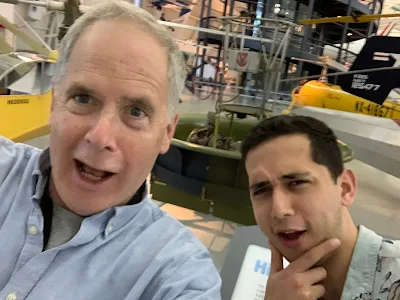Serving the worldwide community of radio-electronic homebrewers. Providing blog support to the SolderSmoke podcast: http://soldersmoke.com
Podcasting since 2005! Listen to Latest SolderSmoke
Tuesday, March 15, 2022
VK2BLQ's Two-Tube Regen with a SolderSmoke Dial
Monday, March 14, 2022
"Fashion" for Fans of LC Analog VFOs
Sunday, March 13, 2022
Video #3 17/12 Transceiver -- Receiver is Working on 12 and 17 meters (Listen! Video!)
Wednesday, March 9, 2022
Video #2 17/12 SSB Transceiver -- Receive RF Amplifier Needed?
Tuesday, March 8, 2022
Soldering to Aluminum with Mineral Oil
Hack-A-Day has a potentially useful workshop tip. Has anyone tried this?
https://hackaday.com/2022/03/06/how-to-solder-to-aluminum-easily/
Thursday, March 3, 2022
Tuesday, March 1, 2022
Dennis WC8C's FB Homebrew 6 Meter Rig -- Any Ideas or Suggestions?
This is my 6 Meter homebrew transceiver, currently work in
progress. It is a single conversion
super –heterodyne design. I constructed
each stage independently with SMA connectors.
This is so I can re-make sections as needed, and will allow me in the
future to swap sections to experiment with alternate designs. The VFO and BFO are controlled using a SI5351
with an Arduino micro controller. I
currently have separate SI5351 modules for VFO and BFO because I suspected
issues with cross-talk. These issues may
not actually be real, so once I am happy with the performance, I will test
again with just one module to see if it is OK.
The Power Amp is still on the to-do list, so output is well under 0 DBm
The Blue boards were designed by me and ordered
on-line. The other boards I etched
myself. Construction is mostly surface
mount because I find it easier than drilling all the holes. SMD components are mostly 805 and 1206 size.
Transistors are SOT23.
The Band Pass filter is a 5 coil design made with air-core
inductors.
3 bi-directional termination insensitive (TIA) amps are used
(blue boards). Total RX gain is about
44db. Total TX gain is about 16db. Each board has its own independent RX/TX
switching circuitry (mosfet based) and is fed with +12.5, GND, and RX/TX logic
signal from the Arduino (3V logic and up will work)
The Mixer and modulator are both Diode Ring mixers.
The 12 MHz SSB filter is a crystal ladder filter similar to
the one used in the uBitx.
The Mic and audio pre-amp (also a blue board) is made on a
modified TIA amp board. I had 10 of
these boards made, and the needed circuitry was largely the same, so I modified
the board with a rotary tool and jumpers.
The Audio amp is a PAM8403 module and drives a headset. I did make some modifications to the module so
it runs in-spec and to eliminate the power on audio pop.
The challenges I have been having are mostly related to
spurs, splatter, carrier suppression and TX audio quality. I have been gradually tweaking these things
to improve operation before I start on a power amp. My IF is 12 MHZ, and I was using the LSB side
of the crystal filter because it is sharper (VFO 62 – 66 MHz) but have recently
changed over to the USB side of the filter (VFO 38 – 42 MHz). This eliminated the spurs I was seeing near the
pass band. I still need to make some
adjustments to the crystal filter as it is too broad.
I still have some splatter and audio quality seems low, but
I am starting to doubt my test setup. I
see the splatter on the RTL SDR, but I don’t see it on the Tiny SA. The spatter happens at ~160 KHz
intervals. I am hoping to find someone
local with a better spectrum analyzer to help me verify if it is the rig or my
SDR dongle/test setup.
The modules to the side of the picture are my
rejects/experiments. The one covered in
copper shows how I eventually will shield all the modules. I 3D printed a cover for the board, when
wrapped it with copper tape, soldered to the bottom ground plane. The one shown is a diode ring modulator. For some unknown reason the carrier
suppression is rather poor. I had
previously made a junk-box modulator that had much better carrier
suppression. I don’t know why it is
better than the one I more carefully made for the radio, but until I figure it
out, I am using the junk box version.
The junk box modulator uses unmatched schottkey diodes, whereas the
“final” one uses a 4 diode SMD package because I wanted them matched – I
thought this would be better, but maybe not.
Monday, February 28, 2022
Free Download of AADE Filter Design Software
Very useful when homebrewing filters. I am using it now to build crystal filters.
http://www.ke5fx.com/aadeflt.htm
Thanks to KE5FX













